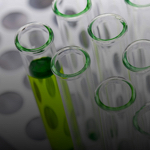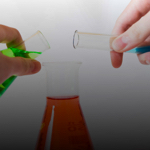Section 1
Preview this deck
noninfectious disease
Front
Active users
0
All-time users
0
Favorites
0
Last updated
6 years ago
Date created
Mar 1, 2020
Cards (57)
Section 1
(50 cards)
noninfectious disease
A disease that cannot spread from one individual to another
solute
the thing in a solution that is dissolved
polysaccharide
large carbohydrates made of monosaccharide
protist
Kingdom composed of eukaryotes that are not classified as plants, animals, or fungi
mixture
2 or more compounds physically mixed together
glycerol
subunit of lipid
monomer
smaller unit
amino acid
monomer of protein
4th level of protein organization
several 3rd level proteins come together
evidence
Collected body of data from observations and experiments
trade-off
An exchange of one thing in return for another; especially relinquishment of one benefit or advantage for another regarded as more desirable.
compound
2 or more elements bound together
disease
An abnormal state in which the body is not functioning normally
adhesion
attraction between molecules of a different substance
1st level of protein organization
chain of amino acids
solution
mixture where there is an even distribution of particles, ex:salt water
ionic bond
element steal or transfer electrons in bond
infectious disease
A disease that is caused by a pathogen and that can be spread from one individual to another.
infectious disease
A disease that is caused by a pathogen and that can be spread from one individual to another.
electron
found in a cloud surrounding nucleus, negative charge
element
1 type of atom, found on the periodic table
protein
An organic compound that is made of one or more chains of amino acids and that is a principal component of all cells
Protein
diverse molecule: can fight disease, be an enzyme, transport within and between cells
indicator
an observation or calculation that shows the presence or state of a condition or trend
unsaturated fat
liquid @ rm temp, has double bonds, plant fat, oils
lipid
fats/oils/waxes, stores energy
DNA/RNA
nucleic acid
Atom
smallest unit of matter
sickle cell
a genetic disorder that causes abnormal hemoglobin, resulting in some red blood cells assuming an abnormal sickle shape
malaria
This disease is commonly associated with poverty and is spread by mosquitos. Each year 1-3 million people mostly in sub-saharan Africa die of this diesase and hundreds of millions are infected.
monosaccharide
monomer of carbohydrate, simple sugar
saturated fat
solid @ room temp, max amount of hydrogens attached, no double bond, animal fat
sustainability
A set of policies or practices by which societies can ensure that the people of the future have the same access to resources and thus the same economic and environmental opportunities as people living today.
3rd level of protein organization
the chain itself folds on itself
nucleic acid
genetic information, transmits hereditary info
polymer
a large molecule made from smaller units(monomer)
vector
An organism that transmits pathogens from one host to another.
cohesion
attraction between molecules of the same substance
isotope
an atom with a different number of neutrons, may be radioactive
nucleus
in the center of the atom, neutrons and protons
2nd level of protein organization
folding and pleating
mutation
A change in a gene or chromosome.
cell
Basic unit of life
covalent bonds
electrons are shared in bond, Carbon loves these
noninfectious disease
A disease that cannot spread from one individual to another
nucleotide
monomer of nucleic acid
van der Waals
force of closely related molecules, they have a slight attaction, geckos can walk up walls, because of these
fatty acid
subunit of lipid(tails)
microbe
An organism invisible to the naked eye, especially one that causes disease
carbohydrate
main source of energy, CHO, also used for structure(cellulose)
Section 2
(7 cards)



